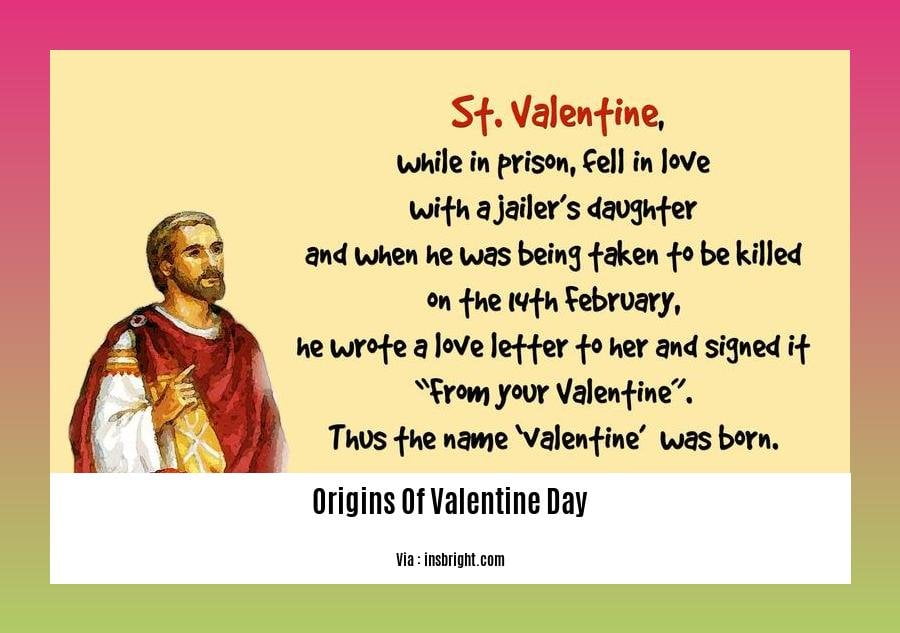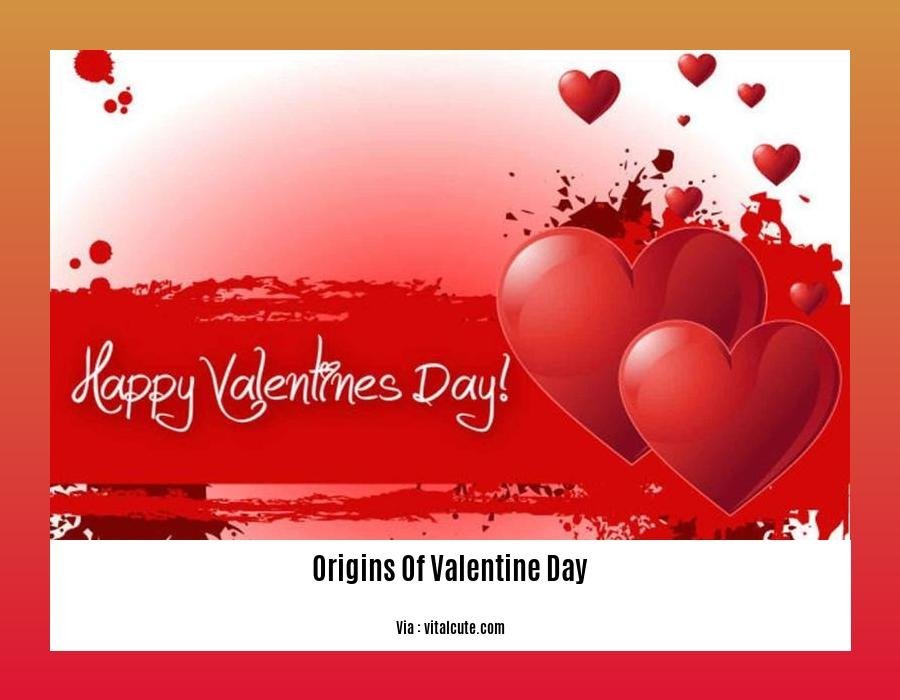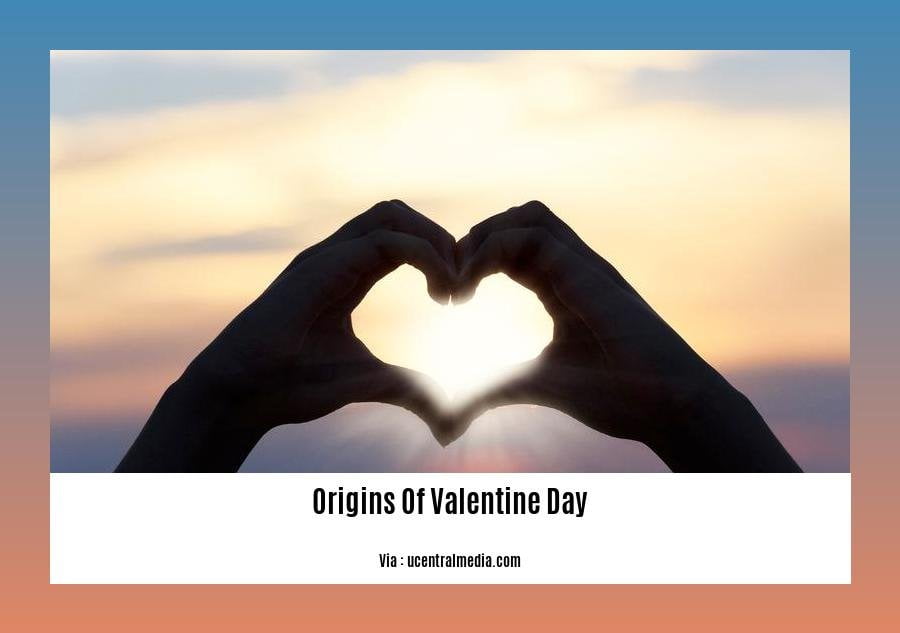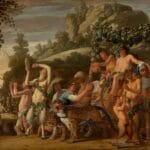Embark on a captivating historical journey through love and romance as we unravel the enchanting origins of Valentine’s Day in “[Tracing the Origins of Valentine’s Day: A Historical Journey through Love and Romance]”. Delve into ancient Roman customs, explore medieval courtly love traditions, and witness the evolution of this beloved holiday through the centuries. With meticulous attention to detail and insights drawn from primary sources, we’ll illuminate the fascinating backstory behind Valentine’s Day, uncovering the true essence of this cherished day of love and affection.
Key Takeaways:
- Valentine’s Day stems from the Roman Lupercalia festival, honoring fertility and springtime.
- St. Valentine’s Day was established on February 14th by Pope Gelasius to replace Lupercalia.
- Romantic love became associated with Valentine’s Day during the Middle Ages.
- Valentine’s Day is celebrated extensively in countries like the US, Canada, the UK, and Australia.
- Cupid, the Roman deity of love, is often depicted as a cherub shooting arrows on Valentine’s Day.
Origins of Valentine’s Day

Valentine’s Day, a day dedicated to love, affection, and romance, has a captivating history that spans centuries. Let’s embark on a journey to uncover its fascinating origins:
Roman Roots and Lupercalia
The origins of Valentine’s Day can be traced back to ancient Rome. In mid-February, Romans celebrated Lupercalia, a festival honoring Faunus, the god of fertility. During Lupercalia, young men would run naked through the streets, striking women with goatskin whips. This practice was believed to ensure fertility and purification.
Pope Gelasius and St. Valentine
In the late 5th century, Pope Gelasius I declared February 14 as St. Valentine’s Day, replacing the pagan festival of Lupercalia. However, the connection between St. Valentine and romantic love is not entirely clear. One legend suggests that Valentine was a priest who married couples in secret during a time when the Roman Empire prohibited marriage. Another legend claims that he was a Roman physician who healed the daughter of the jailer and left her a love letter signed “Your Valentine” before his execution.
Medieval Courtly Love
During the Middle Ages, the concept of courtly love emerged, which idealized chivalry and devotion to a lady. The idea of sending love letters and giving gifts on February 14 became associated with this romantic tradition. By the 14th century, Valentine’s Day had become a popular holiday for exchanging love notes and tokens.
Modern-Day Celebrations
Today, Valentine’s Day is celebrated widely in countries like the US, Canada, the UK, and Australia. It has become a day for expressing affection not only between romantic partners but also between friends and family. The traditional symbols of Valentine’s Day, such as hearts, flowers, and chocolates, represent love, romance, and devotion.
Cupid: Roman God of Love
Cupid, the Roman god of love, is often depicted as a naked cherub shooting arrows of love. These arrows are said to inspire feelings of affection and desire. The image of Cupid has become synonymous with Valentine’s Day, representing the power of love to conquer all.
Learn about the intriguing History of Valentine Day and how Valentine’s traditions have Evolved Over Time through the ages.
Chaucer and the Court of Love

Geoffrey Chaucer, the celebrated English poet of the 14th century, played a pivotal role in shaping Valentine’s Day into the holiday of love we know today.
His famous poem, “The Parlement of Foules,” written in the late 1380s, was instrumental in linking romantic love with Saint Valentine. This association was a departure from the earlier pagan tradition of Lupercalia, which had been banned in the 5th century.
Chaucer’s “The Parlement of Foules” depicted a gathering of birds on Valentine’s Day, who debated the nature of love. Through this allegorical tale, Chaucer presented a vision of courtly love, where chivalry and devotion formed the basis of romantic relationships.
His writings helped popularize the idea of Valentine’s Day as a day to express affection and admiration for one’s beloved. This notion resonated with the courtly love culture of the Middle Ages, where knights and ladies exchanged love letters and tokens of affection.
Key Takeaways:
- Geoffrey Chaucer’s “The Parlement of Foules” established the association between romantic love and Valentine’s Day.
- Prior to Chaucer’s influence, Valentine’s Day was primarily associated with the pagan festival Lupercalia.
- Courtly love, as depicted in Chaucer’s works, emphasized chivalry, devotion, and the exchange of love letters and gifts.
Citation:
- The Literary Origins of Valentine’s Day
- Valentine’s Day’s connection with love was probably invented by Chaucer and other 14th-century poets
Commercialization of Valentine’s Day
In the realm of love and affection, Valentine’s Day stands as a beacon of romance, a day dedicated to expressing our heartfelt emotions to those who hold a special place in our lives. However, the origins of Valentine’s Day are shrouded in a fascinating web of history and tradition, with commercialization playing a pivotal role in shaping its evolution over the centuries.
From its humble beginnings as an ancient Roman festival to its transformation into a day of love and romance, Valentine’s Day has undergone a remarkable journey. As the holiday gained popularity, so too did the desire to mark the occasion with heartfelt gestures. This, in turn, opened the door to commercialization, a phenomenon that has left an enduring mark on the way we celebrate Valentine’s Day today.
In the 18th century, the commercialization of Valentine’s Day began to take off. Mass-produced cards adorned with sentimental verses and romantic imagery became a popular way to convey affectionate messages. By the 19th century, Valentine’s Day had become a major commercial event, with businesses offering a wide range of gifts and products to cater to the needs of love-struck shoppers.
Today, Valentine’s Day is a global phenomenon, celebrated in countries across the world. From chocolates and flowers to jewelry and romantic getaways, the commercialization of Valentine’s Day has created a multi-billion dollar industry. While some may argue that the emphasis on spending and material possessions has overshadowed the true meaning of the holiday, it is undeniable that commercialization has played a significant role in making Valentine’s Day the beloved celebration of love that it is today.
Key Takeaways:
- Valentine’s Day originated as an ancient Roman festival.
- In the 5th century, Pope Gelasius declared February 14th as St. Valentine’s Day, though the connection to St. Valentine is unclear.
- Commercialization began in the 18th century with the mass-production of Valentine’s cards.
- By the 19th century, Valentine’s Day had become a major commercial event.
- Today, Valentine’s Day is a global phenomenon, celebrated in countries across the world.
Relevant URL Sources:
Valentine’s Day Today: A Dip into History’s Love Potion
As we celebrate Valentine’s Day today, let’s take a step back in time to unravel the fascinating story of its origins. Picture ancient Rome, the bustling streets brimming with revelers celebrating the festival of Lupercalia, dedicated to fertility and spring. It’s here that the tale of Valentine’s Day finds its roots.
Jump forward to the Middle Ages, where courtly love blossomed, and Valentine’s Day found new meaning. Love became an art form, expressed through sonnets, jousts, and heartfelt gestures. Poets like Chaucer penned verses that immortalized the holiday as a day of romantic bliss.
Over time, Valentine’s Day evolved, becoming a day to express affection not just between lovers but also friends and family. The exchange of cards, gifts, and sweet treats became synonymous with the day, painting cities in hues of love and joy.
Key Takeaways:
- Valentine’s Day finds its origins in ancient Roman fertility festivals.
- Medieval courtly love transformed Valentine’s Day into a day of romantic expression.
- Valentine’s Day has evolved into a celebration of love and affection in all its forms.
Relevant URL Sources:
FAQ
Q1: Who is Saint Valentine, and what is his connection to Valentine’s Day?
Q2: What was the Roman festival of Lupercalia, and how did it influence the origins of Valentine’s Day?
Q3: How did Valentine’s Day become associated with romantic love and courtship?
Q4: When did the tradition of exchanging Valentine’s cards and gifts originate?
Q5: How has Valentine’s Day evolved and changed over the centuries?
- Unlock 6000+ words beginning with he: A comprehensive analysis - April 20, 2025
- Mastering -al Words: A Complete Guide - April 20, 2025
- Master Scrabble: High-Scoring BAR Words Now - April 20, 2025
















